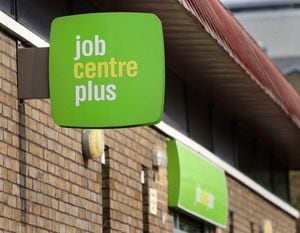Unemployment falls again in Shropshire
Unemployment in the West Midlands – including Shropshire – was down again for the three months to June.

The total stood at 134,000 – 6,000 lower that in the previous three months to March.
However, nationally unemployment in the UK significantly increased, as fewer people were considered economically inactive.
The UK's level of unemployment rose 31,000 to 1.33 million for the quarter, as the rate of unemployment increased to 3.9 per cent.
The West Midlands unemployment rate at 4.6 per cent remains ahead of the UK rate.
The rise in unemployment was the biggest the UK has seen since 2017.
Meanwhile, employment has hit record highs in the UK as the market was boosted by higher numbers of working women and self-employed workers.
The number of people in employment rose by 115,000 to 32.81 million in the three months to June, reaching a new high for people in work, the Office for National Statistics said. The employment figure for the West Midlands was £2.8 million.
Both unemployment and employment rose, as the number of people aged between 16 and 64 considered economically active continued to slide, falling by 47,000 to 8.56 million for the period.
The rise in employment was significantly higher than economists predicted, having forecast an increase of 65,000, but the rate of unemployment was also higher than predicted.
The number claiming unemployment benefits, including Universal Credit in the West Midlands rose by 1,530 to 130,380, or 3.6 per cent of the working population.
Shropshire saw the claimant count rise by 55 to 3,615, or 1.9 per cent of the working population.
Telford and Wrekin's claimant count was up by 130 to 2,935, or 2.6 per cent of the working population.
But the figure in Powys was down by 65 to 1,135, or 1.5 per cent of the population.
Figures nationally also show the percentage of women aged between 16 and 64 in work rose to 72.1 per cent, the highest rate on record.
Job vacancies fell by 20,000 to 820,000 over the period, as it hit the lowest figure in more than a year.
Average earnings, which include bonuses, increased by 3.7 per cent compared with 3.4 per cent in the previous month.
The ONS said that in real terms – after adjusting for inflation – total pay is estimated to have increased by 1.8 per cent compared with a year earlier.
Matt Hughes, deputy head of labour market statistics for the ONS, said: "Employment continues to increase, with three-quarters of this year's growth being due to more women working.
"However, the number of vacancies has been falling for six months, with fewer now than there were this time last year.
"Excluding bonuses, real wages are growing at their fastest in nearly four years, but pay levels still have not returned to their pre-downturn peak."





